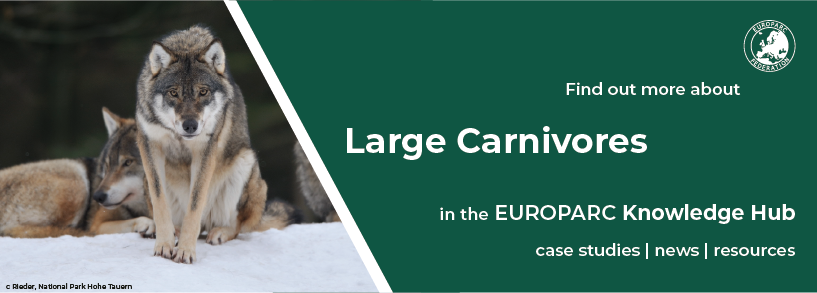Large carnivores: New guidance document on wolf management!
Wolf, National Park Hohe Tauern (A), Rieder
With wolves and other large carnivores slowly resettling in more and more European countries, debates about coexistence with large carnivores grow. The European Commission recently adopted the Guidance document on the strict protection of animal species of Community interest under the Habitats Directive, with a specific section on wolf management.
Protection of species under Habitats Directive
The Habitats Directive is one of the keystones of the EU’s nature and biodiversity policy. It requires Members states to implement measures for conservation and protection of habitats and species. To ensure the latter, a revision of the first guidance document on the strict protection of animal species of Community interest under the Habitats Directive published in 2007 was made. Based on that the European Commission recently updated guidelines under the Habitats Directive. This hands-on tool gives clarifications, recommendations, and good practice examples on legal provisions for strict protection and derogations.
The full guidance document is available in multiple languages here.
Watch the explanatory video by EU Environment:
Large carnivores
Under the Habitats Directive guideline, Article 12 focuses on strict protection for animal species, providing useful information and examples to address issues related to the management of large carnivores, with a dedicated section on wolf conservation.
Wolves, which are the top European predators, have an essential role in the balance of habitats and biodiversity. As of today, the wolf population is recovering in the EU, and this requires high-level management within and between countries in order to best deal with possible arising conflicts and challenges.
As stated in the new Wolf Management document: Implementation of Article 12 of Habitats Directive: The wolf example
Wolf populations tend to spread over very large areas, both within and between countries. […] it is therefore recommended that conservation and management measures are as coordinated and consistent as possible.
In addition, the document highlights the importance of cross-border cooperation and lays out guidelines for:
- Legal requirements for the protection of individual wolves
- Managing wolf-related conflict
- Measures to improve the coexistence of humans and wolves
- Funding for coexistence measures
To know more, visit:
Natura 2000 management section on our website
